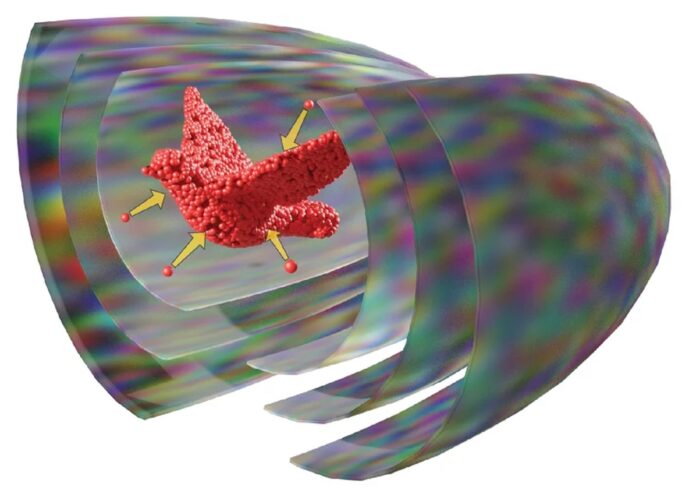Acoustic waves exert forces when they interact with matter. Shaping ultrasound fields precisely in 3D thus allows control over the force landscape and should permit particulates to fall into place to form whole 3D objects in “one shot potentially.”
This is promising for rapid prototyping, most notably biofabrication since conventional methods are typically slow and apply mechanical or chemical stress on biological cells.
Scientists from the Max Planck Institute for Medical Research and Heidelberg University have created compact holographic ultrasound fields and demonstrated the one-step assembly of matter using acoustic forces. They have come up with a new technology to assemble matter in 3D.
To come up with this, scientists used multiple acoustic holograms to generate pressure fields through which they could print solid particles, gel beads, and even biological cells. Their results demonstrated how to form a 3D object from smaller building blocks in a single step.
Kai Melde, a postdoc in the group and first author of the study, said, “We were able to assemble microparticles into a three-dimensional object within a single shot using shaped ultrasound.”
Peer Fischer, Professor at Heidelberg University, said, “This can be very useful for bioprinting. The cells used there are particularly sensitive to the environment during the process.”
Previous studies have shown the formation of ultrasound using acoustic holograms– 3D-printed plates, which are made to encode a specific sound field. These sound fields can be used to assemble materials into two-dimensional patterns. Based on this, the scientists devised a fabrication concept.
In this new study, scientists take this concept a step further. They collect floating particles and cells in the water and assemble them to form three-dimensional forms. Additionally, the novel technique applies to many materials, including biological cells, hydrogel or glass beads, and other materials.
First author Kai Melde says, “the crucial idea was to use multiple acoustic holograms together and form a combined field that can catch the particles.”
Heiner Kremer, who wrote the algorithm to optimize the hologram fields, adds: “The digitization of an entire 3D object into ultrasound hologram fields is computationally very demanding and required us to come up with a new computation routine.”
Scientists noted, “The technology is a promising platform for forming cell cultures and tissues in 3D. The advantage of ultrasound is that it is gentle for using biological cells and can travel deep into the tissue. This way, it can be used to manipulate and push cells without harm remotely.”
Journal Reference:
- Kai Melde, Heiner Kremer, Minghui Shi, Senne Seneca, Christoph Frey, Ilia Platzman, Christian Degel, Daniel Schmitt, Bernhard Schölkopf, Peer Fischer. Compact holographic sound fields enable rapid one-step assembly of matter in 3D. Science Advances, 2023; 9 (6) DOI: 10.1126/sciadv.adf6182
